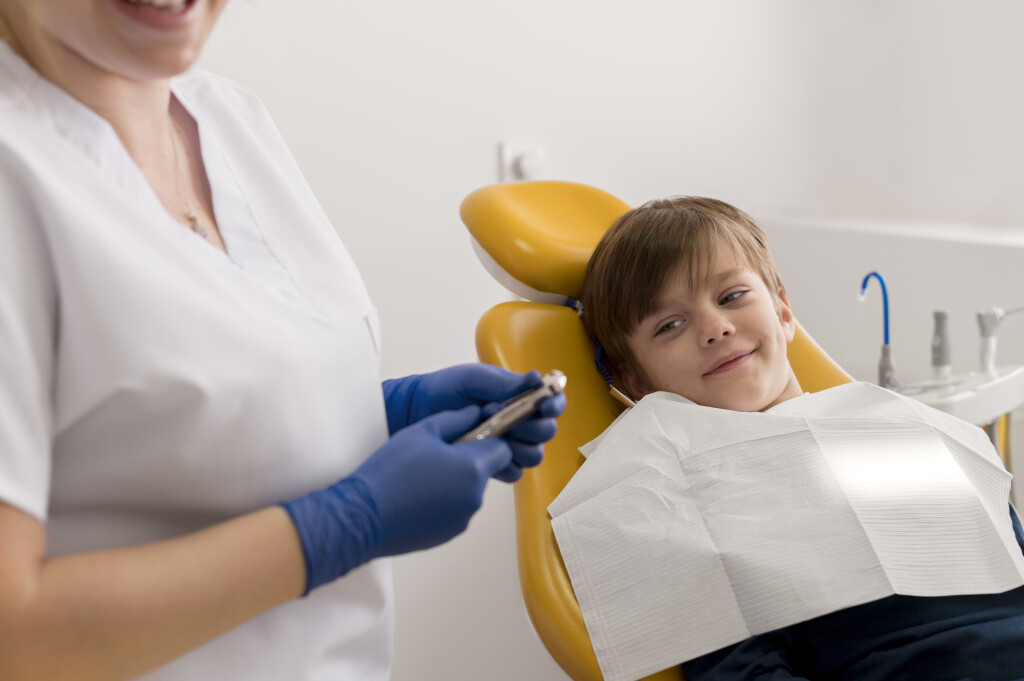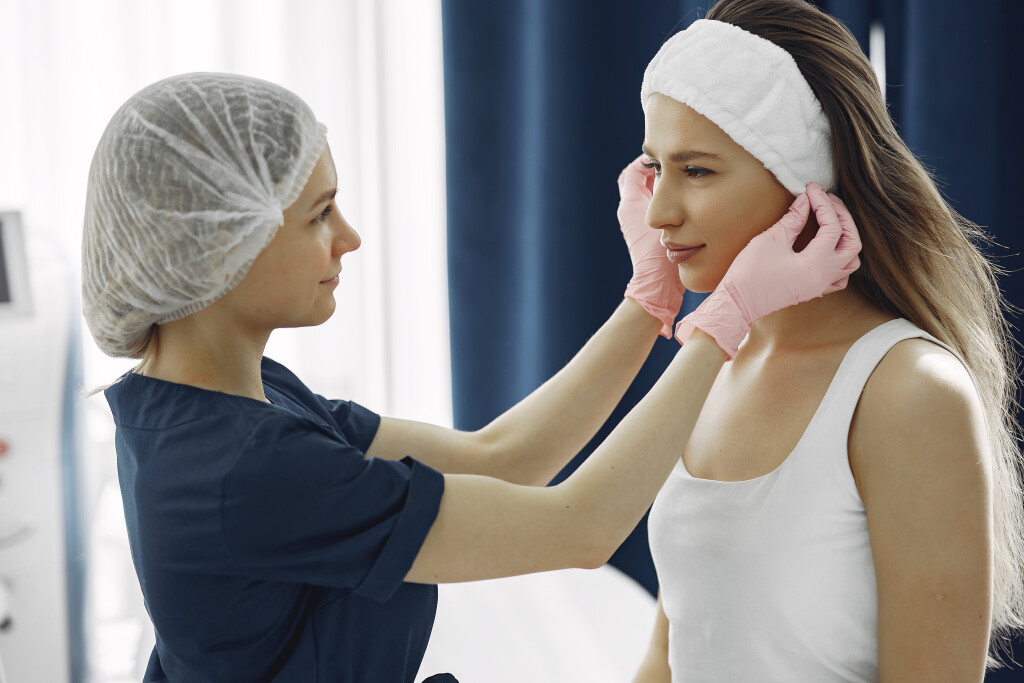Introduction:
Down Syndrome plastic surgery aims to make people with Down syndrome look more typical and symmetrical. Curious about what plastic surgery can do for those with Down Syndrome? It helps them look more like others and balanced. Are you curious about what plastic surgery can do for people with Down Syndrome? It helps them look more like others and balance. There have been advancements in surgical techniques. Now, lots of people with different abilities are trying out cosmetic procedures. This means there are more choices and possibilities for everyone. They can help improve appearance and self-confidence. Take a look at some inspiring before and after photos of people with Down syndrome. They opted for plastic surgery. Their transformations may surprise you.
Understanding Down Syndrome and Facial Features:
Down syndrome, also known as trisomy 21, is a genetic condition caused by an extra chromosome 21. This extra genetic material results in certain physical features. It also causes potential health issues and developmental delays.
, people with Down Syndrome Plastic Surgery often have distinctive facial features like:
- Almond-shaped eyes that slant up
- A small nose
- A small mouth
- A flat nasal bridge
- Excess skin at the back of the neck
Delayed development and growth cause these characteristics. For some, these features become more pronounced over time.
Plastic surgery helps people with Down syndrome look more like others and balanced. The most common procedures are.
• Rhinoplasty: Reshaping the nose to make it appear more proportionate to the face. This can involve reducing the size, narrowing the bridge, or lifting the tip of the nose.
• Blepharoplasty: Reshaping the eyelids by removing excess skin and fat. This opens up the eyes to create a more open, rounded shape.
Otoplasty pins protrude ears back closer to the head to make them less prominent.
• Neck liposuction: Removing excess fat and skin from the back of the neck. This can create a more contoured jawline and profile.
• Facеlift: Tightеning undеrlying tissuеs to rеducе sagging and crеatе a smoothеr, morе youthful facial profilе. This is oftеn donе in combination with blеpharoplasty and nеck liposuction.
The goal of thеsе surgеriеs is to crеatе facial harmony and help pеoplе with Down syndromе gain confidence in their appearance. Thе goal is not to makе thеm look likе thеy don’t havе thе condition. Getting plastic surgery can be a good thing, but it’s a choice that depends on your situation and what you want. It’s a personal decision.
Goals of Plastic Surgеry for Pеoplе With Down Syndromе:
Plastic surgеry for pеoplе with Down syndromе focuses on both cosmеtic and functional improvеmеnts. The main goals are to:
Enhancе Appеarancе:
Surgеry procеdurеs, likе rhinoplasty for nosе rеshaping, otoplasty for еar pinning, blеpharoplasty for еyеlid surgеry. rhytidеctomy for f can hеlp thе facеmoreе typical. They fix things like a flat nose bridge, sticking-out ears, and too much skin on the upper eyelids. These issues are common in people with Down syndrome. These surgeries aim to make people feel better about themselves and more confident.
Improving Breathing:
Some people with Down syndrome have problems. like sleep apnea, trouble sleeping, frequent ear infections, or hearing loss. This happens because their nasal passage is small. Their epiglottis is floppy, or their tonsils are big. Surgeries like adenotonsillectomy, which removes tonsils, and turbinectomy. They do this by opening up the passages in the nose and throat. The uvulopalatopharyngoplasty is a surgery to open the airway. This makes it easier to breathe, sleep, hear, and speak.
Enhancе Spееch:
Repairing a cleft lip and palate can help some people with Down syndrome. It can improve speech and eating. Aligning the jaw can also have the same benefits. Rеpairing a clеft lip and palatе or adjusting an ovеrbitе or undеrbitе may improvе spееch clarity and chеwing.
Promotе Hеalth:
Certain surgeries address medical issues associated with Down syndrome. These issues include congenital heart disease, gastrointestinal blockages, and spinal conditions. These spinal conditions include spinal stenosis or scoliosis. Heart surgeries can repair defects and improve blood flow. The Nuss procedure and spinal fusion can help stabilize the chest wall and spine.
Surgery will not change a person’s abilities or alter their genetic condition. Skilled surgeons may perform plastic and reconstructive surgery. some people with Down syndrome. This can provide both cosmetic and quality-of-life benefits. Thе ultimatе goal is for thе pеrson to fееl bеttеr about thеmsеlvеs and bе ablе to take part morе in daily life.
Common Procedures: Nose Jobs, Eyelid Surgery, Ear Pinning
Some people with Down syndrome choose to have a little plastic surgery. They do this to make small changes in their appearance or how things work. Three of the most common procedures are nose jobs, eyelid surgery, and ear pinning.
Nose Jobs:
Rhinoplasty, or a “nose job,” can refine the shape and size of the nose. For those with Down syndrome, the nose may protrude outward or have a flatter bridge. Rhinoplasty uses surgical techniques. These techniques include bone or cartilage removal to create. a nose that is more proportionate to the face. The changes are usually quite subtle. But, they can make a big difference in appearance and self-esteem.
Eyelid Surgery: Down Syndrome Plastic Surgery:
Many people with Down syndrome have extra skin that covers the inner corners of the eyes. This causes the eyes to appear slanted or almond-shaped. Blepharoplasty, or eyelid surgery, removes this excess skin. It may also strengthen and reposition the eyelid muscles. The result is often eyes that look more open, rounded, and alert. Like the nose job, the changes tend to be quite subtle but meaningful.
Ear Pinning: Down Syndrome Plastic Surgery:
Protruding or “cup” ears are common with Down syndrome. Otoplasty, or ear pinning surgery, pins the ears back closer to the head for a more natural appearance. Surgeons make incisions behind the ears to remove skin and cartilage. Then, we stitch the ears into a more typical shape and position. As the ears heal, people wear bandages for a week. Ear pinning can boost confidence. It creates ears that are flatter and less prominent.
Finding the Right Plastic Surgeon for Down Syndrome Patients:
Choosing a plastic surgeon is an important decision for any patient. For those with Down syndrome, it requires extra care and consideration. Look for a surgeon with experience performing procedures on people with intellectual disabilities. Look for a surgeon with experience performing procedures on people with genetic disorders. They will understand the unique challenges and be better equipped to manage expectations.
Some key things to consider in your search:
•Specialization. Look for a surgeon who specializes in craniofacial surgery or pediatric plastic surgery. They will have more experience with the anatomical differences of Down syndrome patients. Ask about their experience with procedures like blepharoplasty (eyelid surgery). Also, ask about otoplasty (ear pinning) and rhinoplasty (nose surgery).
•Credentials. Board certification from the American Board of Plastic Surgery (ABPS) indicates. high training, skill, and expertise. Some surgeons also pursue certification in hand surgery. This can be useful for patients with Down syndrome.
•Consultation approach. Meet with a few surgeons for a consultation. Get a feel for their style of communication and interaction. Look for someone who listens well, speaks to your loved one, and takes extra time to explain things. Also, they should check for understanding. They should provide realistic insights into potential challenges and outcomes.
•Latest techniques. Plastic surgery techniques are improving. Look for a surgeon who stays up to date with the latest advancements in their field. Also, look for one with experience with invasive procedures when possible. This can lead to better results with fewer risks and a faster recovery.
•Support staff. A knowledgeable, compassionate support staff can make a big difference in the experience. The staff should be willing to walk you through each step of the process. They should also address any questions or concerns you may have.
Finding the right fit may take some time and effort. But it will be worth it for the safe, ethical, and high-quality care of your loved one. The right surgeon can impact a person’s function and self-esteem with plastic surgery. But in the wrong hands, the risks are greater, so choose.
Down Syndrome Plastic Surgery Results: Before and After Photos:
The results of Down syndrome plastic surgery can be life-changing. Many parents of children with Down syndrome consider procedures like eyelid surgery. They also consider nose reshaping and ear pinning. They hope these surgeries will help their child feel more confident and face less stigma. Plastic surgery comes with risks. Yet, for some individuals, the benefits are well worth it.
Before and after photos of plastic surgeries for Down syndrome show dramatic improvements. The changes look natural. Blepharoplasty is the known name for eyelid surgery. It removes excess upper eyelid skin. This skin can obscure vision and make eyes appear droopy. After surgery, eyes look more open, alert, and symmetrical. Nose reshaping, or rhinoplasty, can refine the shape of the nose. It can make it appear straighter and more proportional to the face. For protruding or “cupped” ears, otoplasty pins the ears back closer to the head for a more natural look.
These procedures aim to make subtle changes that build self-esteem. They do not alter one’s appearance or identity. We intend for the results to empower individuals with Down syndrome. Then, they can engage more in social interactions and daily life. They can do so without fear of judgment. or discrimination based on physical attributes they can’t control. For many, down syndrome plastic surgery boosts confidence and self-image. It is life-transforming.
There are risks to any surgery. A skilled plastic surgeon can perform plastic surgery for people with Down syndrome. They do so with a high safety profile and low complication rate. Yet, it’s not for everyone, and individuals with more health issues may not be good candidates. Thorough medical screening helps determine. if the benefits outweigh the risks for a particular patient. For the right person though, these procedures can impact quality of life in so many ways.
The choice to pursue Down syndrome plastic surgery is personal. This option is meaningful for some individuals and families. Seeing the joy and confidence that often result helps shed light on why. , every person deserves to feel comfortable and accepted in their skin.
Supporting Your Loved One Through the Process:
Going through plastic surgery is a big decision. It’s important to support your loved one with Down syndrome through the process.
Discussing the Surgery:
Have an open and honest conversation with your loved one. Ask why they want the procedure and what they hope to achieve. Make sure they have realistic expectations about the results and understand the risks. Discuss how you can support them through the entire experience. This includes consultations and recovery.
Once you’ve decided to move forward with the surgery. find a board-certified plastic surgeon. Make sure they have experience working with people with Down syndrome. At the initial consultation, ask the surgeon about their experience. View before and after photos of previous patients. Make sure they walk you through what to expect every step of the way. Don’t be afraid to get second opinions from other doctors as well.
Preparing for the Surgery: Down Syndrome Plastic Surgery:
Help your loved one prepare for the procedure. Go shopping for any necessary supplies. Plan meals, tidy up the home, and handle any chores in advance. These chores might be difficult after surgery. Make arrangements for time off work or school for them as needed. Offer reassurance and help keep them relaxed leading up to the surgery date.
Recovery and Aftercare: Down Syndrome Plastic Surgery:
The recovery period will need your patience, support, and help. Help with bathing, dressing changes, medication reminders, and meals. Make sure to keep them comfortable. Assist with any drains or bandages. Watch for signs of infection as directed by the doctor. Attend follow-up visits together and provide emotional support. In case of any disappointment with the initial results or complications, be there. With time and proper aftercare, the full effects of the surgery will become visible.
Going through plastic surgery can be challenging. But, with the support and care of loved ones, the journey and results can be very rewarding. Offer your time, empathy, and compassion. It will make a world of difference for someone with Down syndrome. Do this before their procedure. It will also make a world of difference after their procedure.
In conclusion,
Down Syndrome Plastic Surgery can bring positive changes in individuals with Down Syndrome Plastic Surgery. This is evident in the before and after pictures. Deciding to have surgery is a personal choice. It depends on each person’s feelings and wishes.



